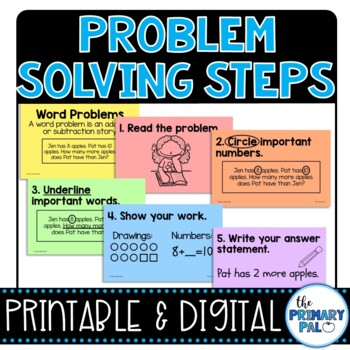Math Problem Solving Steps
- PDF
- Google Apps™

What educators are saying
Description
These Problem Solving Steps can easily be used in accompaniment with any math curriculum. They also coordinate perfectly with my common core aligned kindergarten and 1st-grade math vocabulary cards, as well as my mathematical practices cards.
Resource Highlights:
- Includes 5 steps for teaching problem solving
- Each step is explained in kid-friendly terms
- A visual accompanies each step for increased comprehensibility
- Low prep! Simply print, cut, and add to an anchor chart or math wall
- Includes a digital option with each problem-solving step in a set of Google Slides™ that you can copy into your Google Drive™
Click the links below for more common core aligned math resources:
1st-Grade Problem Solving Bundle
2nd-Grade Problem Solving Bundle
1st-Grade Math Vocabulary and Worksheets Bundle
Kindergarten Math Vocabulary and Worksheets Bundle
Interested in saving money?! Follow me so that you can be notified when I list a new resource. All of my new resources are listed at 50% off for the first 24 hours!
I hope that you find this resource engaging and purposeful for using in your own classroom. If you do, I'd greatly appreciate your feedback!
As always, I love to see photos of my resources in action so be sure to send me pictures or tag me on Instagram: @theprimarypal




